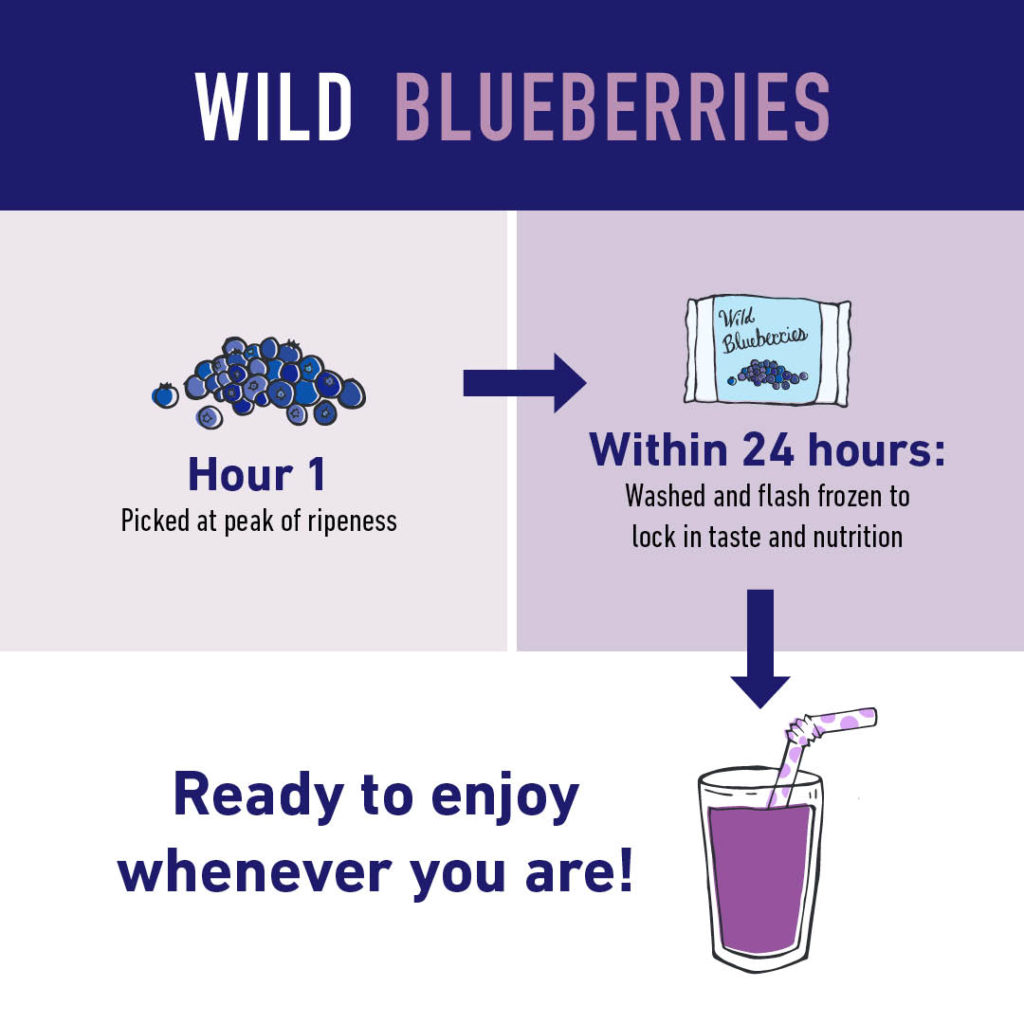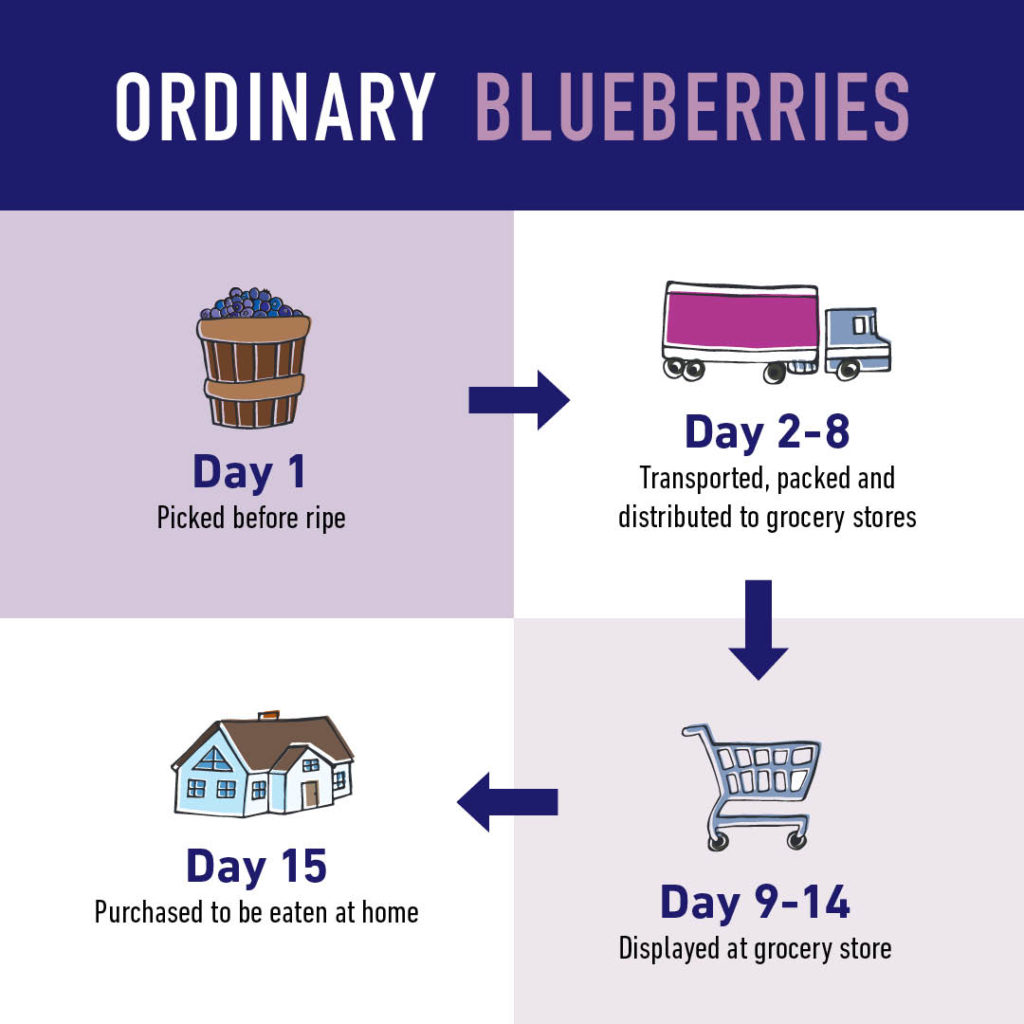Why Choose Frozen Wild Blueberries?
Frozen foods tend to get a bad reputation for being unhealthy and hyper processed, but truth be told, you can actually find amazing and nutritious healthy food options in the frozen foods aisle – especially when it comes to frozen fruits and vegetables. Since the concept of flash-freezing fruits and vegetables was invented in the 1920s, frozen foods have become a staple many people rely on for weekly meals. As of 2022, the American Frozen Food Institute reported that 99.4% of U.S. households consume frozen foods. And while many people question the nutritious benefits of frozen fruits and veggies, it’s actually been found that they possess a higher nutritional value than those of their fresh counterparts.
Exhibit A: Naturally grown and nutritiously delicious wild blueberries.
These tiny, potent berries are tasty whether they’re consumed frozen or fresh, but frozen wild blueberries are frozen at peak of ripeness, locking in nutrition benefits and taste. So, in this case, frozen is actually fresher. In honor of March being National Frozen Foods Month, we’re dishing on why this is the case.
The Benefits of Flash Freezing Wild Blueberries
Did you know that:
- Flash freezing fruit locks in fresh taste, nutrition, and convenience
- Research shows frozen fruit is often nutritionally superior to its fresh counterpart
- 40% of all food produced in the United States is not eaten before expiration. Frozen food can help reduce the food waste epidemic in the United States.
- Frozen food generates 47% less food waste than ambient and chilled food in the home
What can we say…the facts don’t lie!
The Wild Blueberry Journey: Harvest to Household
Wild blueberries are harvested in Maine, right where Mother Nature put them more than 10,000 years ago. Harvest season takes place annually in July and August and over 90% of the crop is flash frozen at the peak of ripeness so you can enjoy the taste of Maine summer all year long. To make sure you’re getting true wild blueberries, you’ll want to visit the frozen fruit section of your local grocery store and double check that the package says “wild” on it.
So, how do these little blue gems get from harvest to your table? Here’s the journey of frozen wild blueberries:
- Hour 1: Picked at peak of ripeness
- Within 24 hours: Washed and flash frozen to lock in key vitamins, minerals, and tasty goodness
- Ready to enjoy, well…whenever: delivered to the frozen foods aisle of your local grocery store, ready for you to bring home!
- Extended shelf life: Good for about 6-9 months if kept constantly frozen

Unlike wild blueberries, ordinary blueberries can be planted anywhere and grow year round. Their journey is a little different than frozen wild blueberries. Let’s dive into the differences in the journey of an ordinary blueberry from farm to table:
- Day 1: Picked before they’re ripe
- Day 2-8: Transported, packed, and distributed to grocery stores
- Day 9-14: Arrival at grocery store
- Day 15-20: Purchased and eaten at home
- Short shelf life: Should be eaten within one week of purchase

So, now you know, frozen is fresher – and just as nutritious and delicious as fresh.
And the best part? Wild blueberries are versatile! Keep your freezer stocked so you have easy access to frozen wild blueberries to blend in your smoothies or to top off your oatmeal year round.
If you want to learn more about why frozen really is fresher, check out the Wild Blueberries website for more information. Happy Frozen Foods Month! Celebrate by picking up some frozen wild blueberries from your local grocery store (just make sure it says “wild” on the package).

